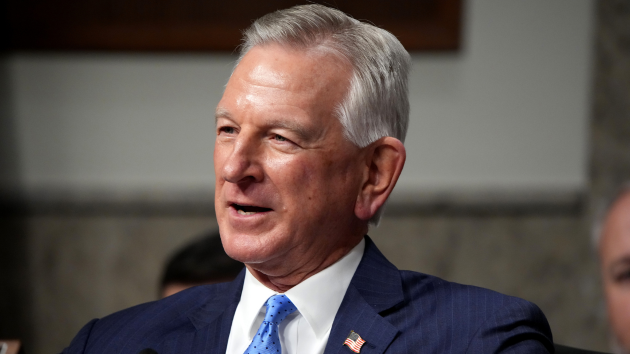As death toll climbs in the West from historic US heat wave, flash flooding, tornadoes hit the East
Written by ABC Audio ALL RIGHTS RESERVED on July 11, 2024

(WASHINGTON) — As a historic U.S. heat wave continued on Thursday, heat-related deaths in July climbed to at least 28 in the West, while the East Coast recovered from tornadoes and flash flooding as it braced for the return of sweltering temperatures after a brief break.
More than 60 million people in nine Western states remained under heat alerts on Thursday. At least seven cities, including Las Vegas, Phoenix and Salt Lake City, broke or tied their all-time temperature records on Wednesday and several cities were poised to set new daily high-temperature marks on Thursday, according to the National Weather Service (NWS).
Heat-related deaths reported
The Santa Clara County, California, Office of the Medical Examiner-Coroner reported that 18 heat-related deaths occurred in the county in the first 10 days of July. The county – including its largest city, San Jose – has recorded a string of days in July during which the temperature rose to the high 90s and exceeded 100 degrees Fahrenheit.
In a statement released Wednesday, the medical examiner’s office confirmed two individuals who died from exposure to the heat were unhoused and one individual was enrolled in a transitional housing program.
“There’s going to be people who just don’t make it through this,” Shaunn Cartwright, an advocate with the organization Unhoused Response Group, told ABC station KGO in San Franciso.
Cartwright said that of the 18 who perished in the heat in the county, at least six were older than 50.
“People are just in a state right now – they’re hungry, they’re extremely thirsty, and they’re at a point right now where they just can’t help themselves,” Cartwright said of the homeless population in Santa Clara County. “[Assistance] needs to come to them, they are just so depleted and really on the edge right now.”
Elsewhere in California, a motorcyclist died from heat exposure on Saturday in Death Valley National Park as the temperature there hit 127 degrees, according to park rangers. In Sacramento, a 58-year-old man died Saturday of heatstroke as the temperature soared to 113.
In other parts of the West, two suspected heat-related deaths were reported in Arizona, including a 4-month-old who experienced a heat-related emergency on Friday while on a boating trip in Lake Havasu as the temperature reached 120 degrees, according to the Mohave County Sheriff’s Office.
A 10-year-old boy also died in Arizona after falling ill on July 2 while hiking with his family in the South Mountain Park and Preserve in Phoenix, according to the Phoenix Police Department. Additionally, a hiker also died after being found unresponsive over the weekend in the Grand Canyon, marking the third death in the national park within the last three weeks.
Meanwhile, six suspected heat-related deaths have been reported in Oregon since July 5, when Gov. Tina Kotek declared a statewide emergency because of the heat. Three of the deaths occurred in Multnomah County, according to the Multnomah County Medical Examiner.
Nineteen cities in the West break all-time temperature records
At least 19 cities have broken their all-time high temperature records in the past week, including Las Vegas, which hit 120 degrees on Sunday for the first time in its history.
Las Vegas broke another record on Wednesday when it experienced its fifth straight day of temperatures of 115 degrees or higher. Prior to this week, Las Vegas had never experienced a temperature that exceeded 117 degrees, but the temperature there has reached or surpassed the 117 mark three times this week alone.
Sin City could also break its record of 10 consecutive days of 110-degree temperatures or higher by the end of this week. The temperature in Las Vegas is forecast to climb to a blistering 118 degrees on Thursday, 115 on Friday, and 112 on Saturday, according to the National Weather Service.
Salt Lake City could also break a daily heat record on Thursday for the second straight day. The temperature there is expected to climb to 105 degrees on Thursday, topping its previous July 11 high mark of 104 degrees, according to the NWS.
In Houston, Texas, a million electrical customers remain without power for the fourth straight day since Hurricane Beryl barreled into the city. The temperature in Houston is forecast to reach a high of 90 degrees on Thursday with a 40% chance of rain. The National Weather Service said the heat index, which factors in humidity, will make Houston area temperatures feel more like 106 degrees.
Tornadoes, flash flood watches in the Northeast
Remnants of Beryl brought up to six inches of rain on Wednesday evening from northern New York state to Vermont and New Hampshire, flooding neighborhoods and prompting evacuations.
At least three tornadoes were reported in New York state on Wednesday, including an EF-1 twister near Buffalo that packed 110 mph winds, according to the NWS.
A total of 41 tornado warnings were issued in New York on Wednesday, tying the record for the number of tornado warnings issued in a single day in the state.
In Vermont, heavy rain from the remnants of Beryl caused flash flooding in several cities, including Barre and Lyndonville, where multiple roads were closed due to flooding, officials said.
Further South, a storm stretching from North Carolina to Virginia and the Mid-Atlantic states could produce up to five inches of rain through Saturday.
The severe weather on Wednesday cooled East Coast temperatures, but the reprieve from the hot, humid weather that has enveloped the region recently will be brief.
By Sunday, the heat will return to the East Coast with temperatures in the 90s from Boston to Washington, D.C. Combined with the heat index, temperatures on the East Coast will feel above 100 degrees into next week, according to the National Weather Service.
Copyright © 2024, ABC Audio. All rights reserved.

 KVSP
KVSP 




